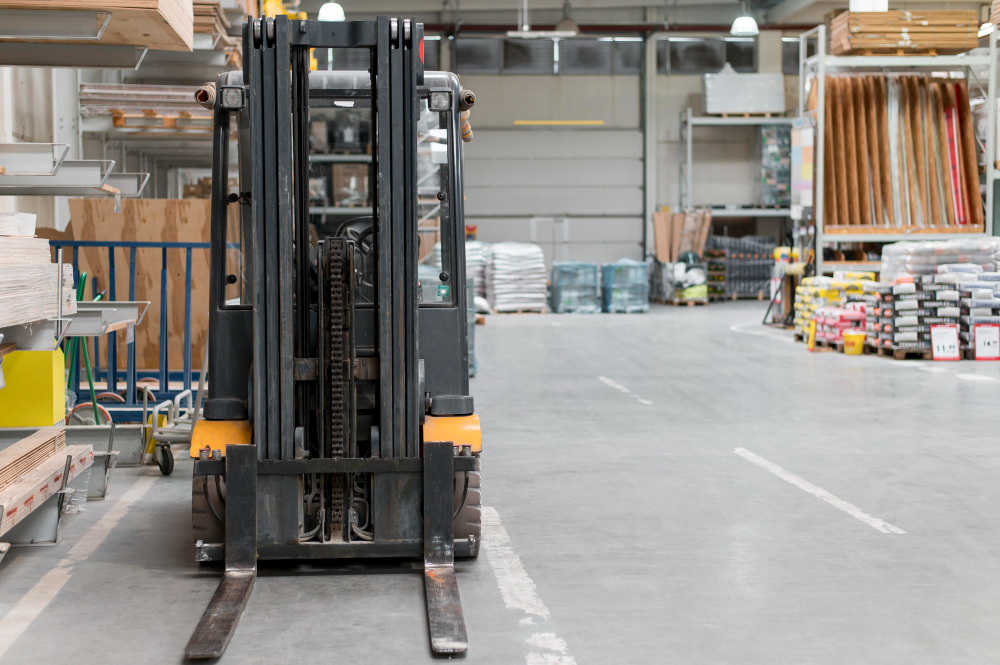Forklifts play a pivotal role in various industries, serving as indispensable tools for handling heavy loads in construction sites, warehouses, and dockyards. These versatile machines are designed to lift and move substantial weights, making them essential for efficient material handling. However, selecting the right forklift involves considering various factors, with one crucial element being the forklift mast. In this comprehensive guide, we will explore the significance of forklift masts, their key components, and the considerations that businesses must keep in mind to choose the most suitable forklift for their specific needs.
What is a Forklift Mast?
At the heart of every forklift lies the forklift mast, also known as the upright. This mechanical structure is positioned at the front of the lift truck, enabling it to raise loads to the required heights. The forklift mast operates through hydraulic displacement for lifting and utilizes gravity for lowering. It consists of multiple sections, including nested rails, a carriage, chains, and forks, all working in tandem to facilitate material handling.
Learn More : What is a free lift on a Forklift?
Considerations When Choosing a Forklift Mast
Free Lift:
Definition: Free lift refers to how high a forklift operator can raise the forks without changing the mast’s height.
Significance: Particularly crucial in locations with low overhead clearance.
Consideration: While free lift enhances maneuverability in confined spaces, it may limit visibility if the lift mechanism is centrally located in the mast.
Lowered Height:
Definition: The distance from the floor to the top of the mast when it is lowered.
Importance: Critical in situations where the forklift will navigate through confined spaces, such as doorways.
Extended Height:
Definition: The distance from the floor to the top of the mast when fully extended.
Relevance: Determines the maximum height the forklift can reach, impacting its suitability for specific tasks.
Lift Height:
Definition: Also known as maximum fork height (MFH), it measures the distance from the floor to the forks.
Consideration: Recommended lift height is typically six inches above the highest shelf to allow for maneuverability.
Common Types of Forklift Masts
Single-Stage (Simplex) Mast:
Description: Lacks free lift and has only one channel.
Application: Suited for outdoor use where overhead clearance is not a concern.
Two-Stage (Duplex) Mast:
Description: Offers free lift and is ideal for indoor applications with limited overhead space.
Advantage: Better visibility for the operator due to fewer mast sections obstructing the view.
Three-Stage (Triplex) Mast:
Description: The most common and versatile mast, with two sliding rails and an angled stationary rail.
Application: Suitable for warehouse operations, providing free lift and reaching greater heights.
Four-Stage (Quad) Mast:
Description: Boasts the highest reach but is more complex with four sets of moving rails and chains.
Consideration: May have restricted visibility, requiring special training for operators.
Learn More : What is the difference between a Class 2 and a Class 3 forklift forks?
Conclusion
In conclusion, the selection of the right forklift with an appropriate mast is paramount for businesses involved in material handling. Understanding the vertical space of your facility, the height of racks, and the nature of loads to be handled is crucial in making an informed decision. By carefully considering factors such as free lift, lowered height, extended height, and lift height, businesses can optimize their forklift selection process. Moreover, being aware of the different types of forklift masts and their respective applications ensures that businesses choose the most suitable equipment for their unique operational requirements. As forklifts continue to be indispensable in various industries, a well-informed approach to mast selection is key to enhancing efficiency and preventing potential accidents in the workplace.



